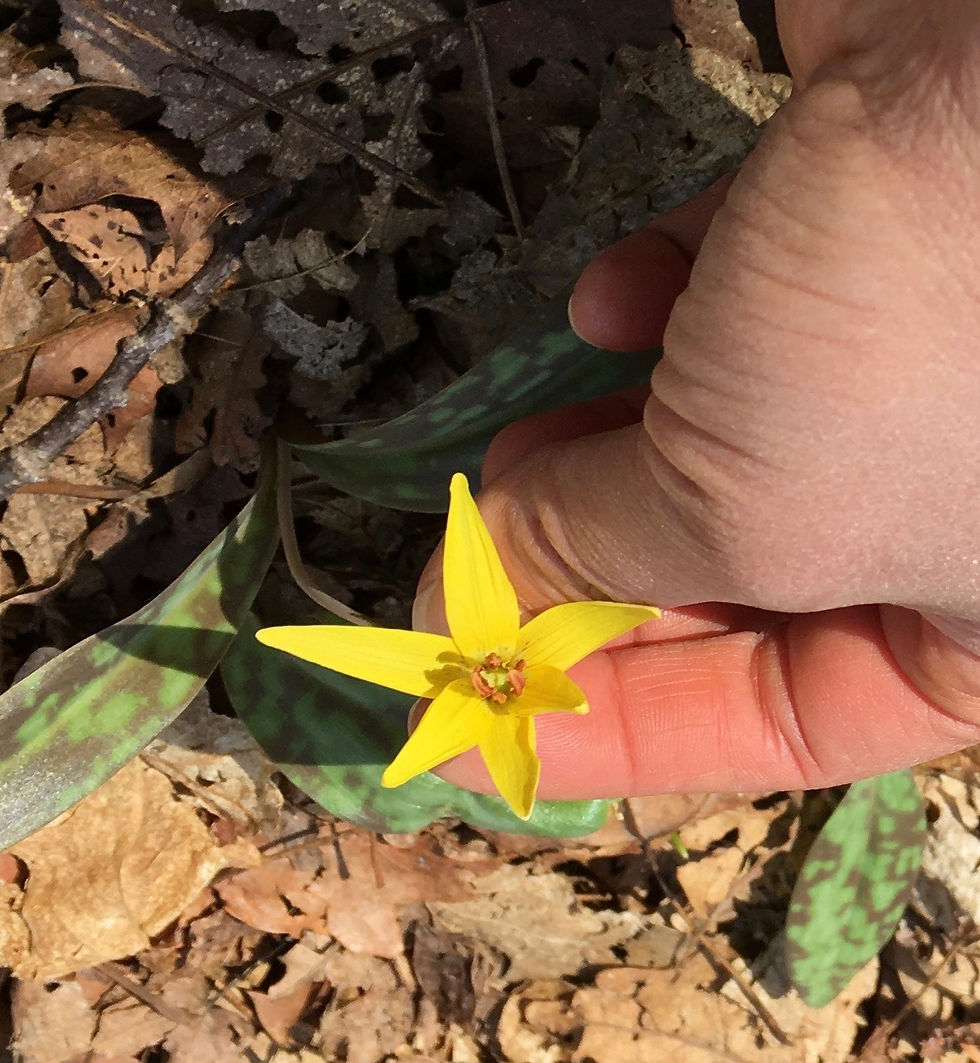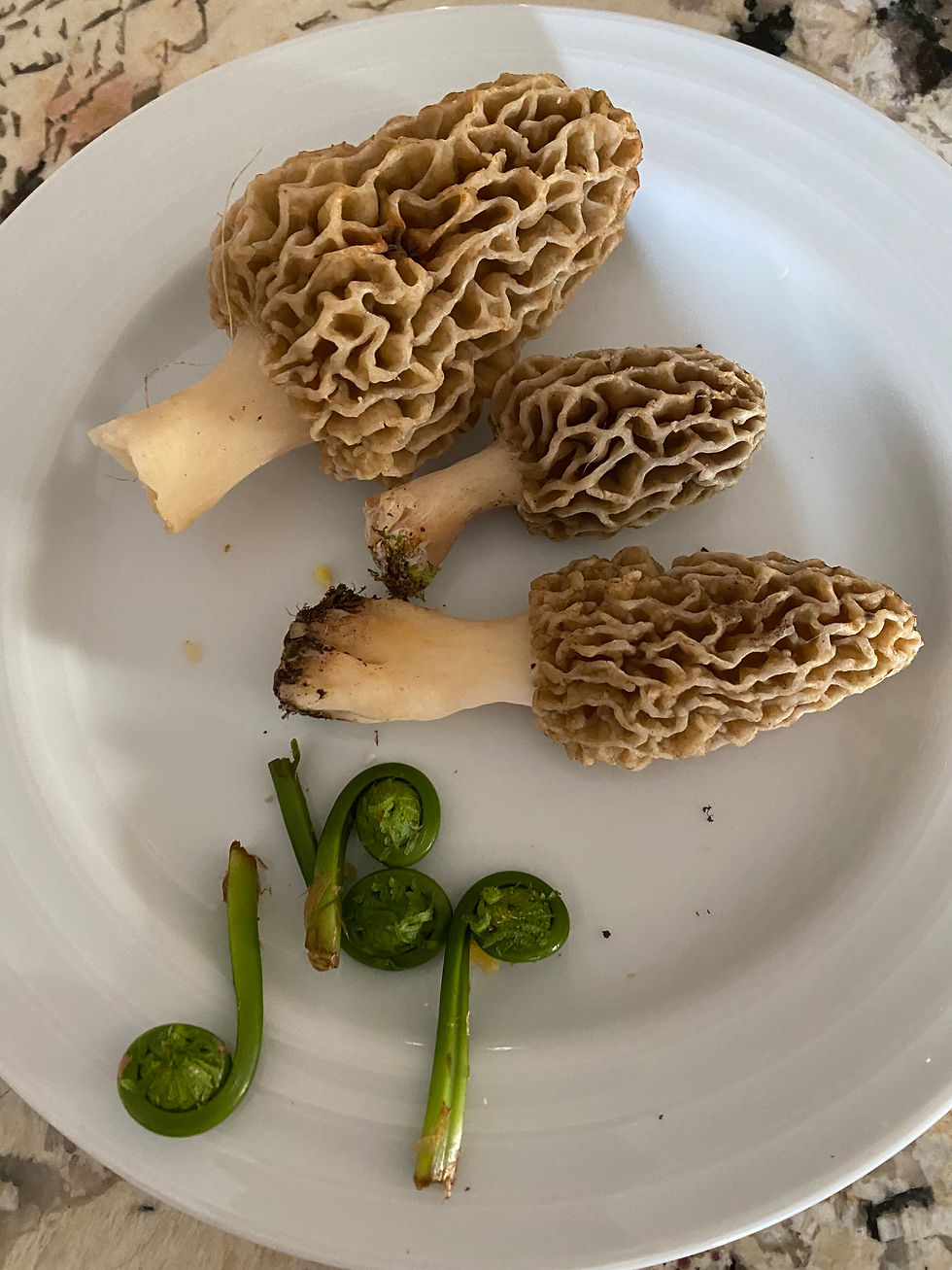Spring Foraging Fever
- nancypau
- May 25, 2021
- 3 min read
The waiting starts every February. As the snow melts, and temperatures get warmer, I get impatient for anything green sprouting from the newly exposed ground. Luckily, some of the earliest plants to come up in Massachusetts are also edible, and they are a treat for both the eyes and taste buds after the long New England winter. Promise of finding wild foods even encourages my two boys to go on a early Spring hike. Here are a few of our favorite Spring edibles.
Wintergreen, Gaultheria procumbens

Wintergreen is an evergreen ground cover that's found in forests. In Massachusetts, it's often found in mixed pine and hardwood forests, often where you would find blueberry understory. The leaves and berries are edible, and taste like wintergreen gum-- or rather, wintergreen gum take like this plant.
I like to nibble on the leaves while I'm hiking (chew and spit out the leaves). You can collect the leaves and berries to make some tea or extract. Harvest responsibility by taking a leaf from each plant, or picking plants from large patches.
Field Garlic, Allium vineale

Field garlic is one of the first plants to emerge, and can be found in many habitats, including fields, road sides, and along trails. This plant emerges just as snow is melting. It has hollow stems like chives and has the distinctive onion smell. All parts of the plant is edible, but my favorite part of the bulb. Use a small trowel or stick to dig the bulbs. This plant is introduced from Europe and is abundant throughout US; so no worries about over harvesting.
Trout Lily, Erythronium americanum

Growing in the understory of forests, the Trout Lily is one of the earliest native plants to flower. As a spring ephemeral, it blooms, produces seeds, and dies all before the trees leaf out. The mottled leaves of this plant is distinctive. Plants have either 1 or 2 leaves. The 2-leaf plants produce flowers, but the 1 leaf plants are easier to harvest. Both the bulbs and the leaves are edible; but I think the leaves are bland. The bulbs, while small, are nutty and juicy. While this plant can be abundant in some area, they are disappearing from our native woods. Please only collect a small amount from large colonies, or better yet, collect seeds to grow some in your own yard.
Morels and Ostrich Fern (Matteuccia struthiopteris.)

Morels are the ultimate forager's treasure, and emerges around the time shadbush (Amelanchier canadensis) flowers. To me, this mushroom, more than any other, has the quintessential umami flavor. My favorite way to cook it is with fiddleheads (Ostrich fern), which typically are available around the same time. Morels are found in around dead trees in forests, but their brown color and texture make them impossible to find. I've only found morels in fellow gardener's yards, typically under a hardwood tree, in neglected part of the yard, with abundance of wood chips and leaf litter.
Garlic Mustard, Alliara petiolata

This invasive plant is found throughout West Newbury, almost year-round, in a variety of habitat, including roadsides, fields, and forest understories. This plant is easy to collect, especially during spring. This is an aggressive invasive plant, so collect as many as you can. While some forager exalt this plant for its garlic-like flavor and nutritional value, I find the plant a bit bland. All parts of the plant is edible. Use as pesto or any leafy green, or grate up roots in place of garlic.
Disclaimer: Positive identification of plants is best learned from an expert, in person, in the field. We hope to offer some foraging field trip in Fall of 2021, and will host Foraging Expert, Russ Cohen for a foraging presentation. Check our events page in mid-summer for more details. In the meantime, keep an eye out for potential edibles with the following ground rules.
Ground Rules for Foraging:
It’s fun to learn the plants… don’t eat unless you’re sure. Take a picture and send it to an expert.
Be careful of plants near roads and trails.
Try small bites first. Different people have different reactions to wild edibles.
Be careful of poison ivy and other dangers.
Plant them in your garden (save seeds or buy from reputable source or from a fellow gardner).
.png)



Comments